Comments / Questions (49)
![]() Valentin wrote:
Valentin wrote:
Bonjour, je ne comprends pas bien comment finir les manches, en rabattant 2 mailles de chaques côtés jusqu'à 55 cm je me retrouve vite à court de mailles sans atteindre les 55 cm. ( Je rabats 2 mailles de chaque côtes à tout les rangs). Je pense que j'interprète mal les explications mais je ne vois pas où? Merci de votre temps
26.08.2025 - 21:16DROPS Design answered:
Bonjour Mme Valentin, lorsque vous avez rabattu les premières mailles (3x2 m + 3-4 x 1 m) de chaque côté, il vous reste 56-60 m, vous devez rabattre 2 m de chaque côté jusqu'à ce que la manche mesure 55 cm, vous devez avoir suffisamment de mailles encore si votre tension est juste; la tête de manche doit mesurer environ 11-13 cm de hauteur totale. Bon tricot!
27.08.2025 - 07:48
![]() Celine wrote:
Celine wrote:
Hi! When working on each side of the front shoulders separately, it is told to dec towards the neck does it mean decrease where the neck is or where the sleeve is? Thanks!
06.02.2023 - 02:01DROPS Design answered:
Hi Celine, This means to decrease by the neck. Happy knitting!
06.02.2023 - 07:57
![]() Elia wrote:
Elia wrote:
Por favor con qué tamaño de agujas de hace el cuello, Gracias, muy lindo modelo ❤️
13.12.2021 - 03:32DROPS Design answered:
Hola Elia, con agujas circular tamaño 4.5 mm. Saludos!
13.12.2021 - 08:30
![]() Giusti wrote:
Giusti wrote:
I lavori eseguiti con i ferri circolari si possono realizzare con i ferri dritti? Grazie e Buona notte !giusiguarino9
27.03.2021 - 00:23DROPS Design answered:
Buongiorno Giusti, per i modelli aperti come i cardigan, si possono utilizzare anche i ferri dritti. Per i modelli che prevedono la lavorazione in tondo, si deve riprogettare il modello. Buon lavoro!
27.03.2021 - 18:44
![]() Pernille Larsen wrote:
Pernille Larsen wrote:
Så vidt jeg kan se, er der en fejl i den viste model på billedet. De to yderste snoninger i midterstykket er kun snoet en enkelt gang for neden , hvor der er to resten af vejen op
09.01.2021 - 12:47
![]() Nadège wrote:
Nadège wrote:
Bonjour juste pour être sûre de bien comprendre, quand je suis en train de faire a3b-a2b-a1b, a3b et a1b sont plus petits en hauteur que a2b. Je dois les recommencer plusieurs fois pour arriver à la même hauteur que a2b ?
29.07.2020 - 21:30DROPS Design answered:
Bonjour Nadège, on répète les diagrammes en hauteur, mais effectivement, comme le nombre de mailles de chaque diagramme est différent, on va répéter A.1b et A.3b plusieurs fois en hauteur avant d'avoir terminé A.2b, assurez-vous de toujours bien avoir le bon nombre de rangs entre chaque torsade dans A.1b et A.3b., et en même temps, continuez et répétez A.2b en hauteur. Bon tricot!
30.07.2020 - 09:09
![]() Coby Teune-Pabon wrote:
Coby Teune-Pabon wrote:
Net klaar met breien en een week lang aangehad. Deze wol pilt enorm, dat vind ik wel jammer van al mijn werk, die ik er in heb gestoken.
31.01.2020 - 11:41
![]() Helena wrote:
Helena wrote:
Bei den Ärmelabnahmen verstehe ich die Anleitung nicht ganz. Einmal ist von 2 M je 3 x [...] und dann stets je 2 M beidseitig die Rede. Wo ist da der Unterschied? Wenn ich beides synonym verwende habe ich am Schluss 7 Maschen zum Abketten. Richtig?
07.01.2020 - 10:17DROPS Design answered:
Liebe Helena, bei den Ärmeln sollen Sie am Anfang jeder Reihe (= Hin- sowie Rückreihen) so abketten: 2 Maschen 3 Mal (= 6 Maschen beidseitig), dann 1 Masche 1-2-3-4-6-9 Mal (siehe Größe) (= 1-2-3-4-6-9 Maschen beidseitig), dann 2 Maschen bis die Ärmel 54-55-56 cm mist (die abgekettene Maschenanzahl hängt hier an Ihrer Maschenprobe), dann 3 Maschen (dazu in A.4 abnehmen). Hoffentlich hilft es Innen. Viel Spaß beim stricken!
07.01.2020 - 12:24
![]() Eva wrote:
Eva wrote:
Het patroon van de mouw klopt niet. Bij het patroon moet je in de ruit 8 toeren breien zoals ze zijn en dan weer in het patroon, Maar als je op een gegeven moment bij de kop heen en weer moet breien komt dat niet uit en moet je de overhalingen op de averechtse kant doen. Dan kan volgens mij niet. Ik maak dus maar 1 toer korter in het patroon van de mouw. Jammer, want ik had de rest al klaar dus hoop ik maar dat het niet opvalt.
03.01.2020 - 12:56
![]() Bret wrote:
Bret wrote:
Peut on faire ce modele en 2 parties et non avec des aiguilles circulaires car je n'en n'ai jamais fait et jai un peu peur
03.12.2019 - 09:09DROPS Design answered:
Bonjour Mme Bret, vous trouverez ici, comment adapter un modèle sur aiguilles droites; osez vous lancer avec les aiguilles circulaires à l'aide de nos vidéos, votre magasin DROPS saura vous conseiller si besoin, même par mail ou téléphone. Bon tricot!
03.12.2019 - 12:55
Winter Flame#winterflamesweater |
|||||||||||||||||||
 |
 |
||||||||||||||||||
Knitted DROPS jumper with cables and high collar in ”Alaska”.
DROPS 164-46 |
|||||||||||||||||||
|
PATTERN: See diagrams A.1 to A.4. BODY: Worked in the round on circular needle. Cast on 180-196-212-228-252-268 sts on circular needle size 4.5 mm / US 7 with Alaska. Beg round = side. Work as follows: Size S-M-L-XL: P 1, * K 2, P 2 *, repeat from *-* over the next 16-20-24-28 sts, A.3 a (= 8 sts), A.2 a (= 40 sts), A.1 a (= 8 sts), * P 2, K 2 *, repeat from *-* over the next 32-40-48-56 sts, P 2, A.3 a, A.2 a, A.1 a, * P 2, K 2 * over the next 16-20-24-28 sts, finish with P 1. Size XXL-XXXL: K 1, P 2, * K 2, P 2 *, repeat from *-* over the next 32-36 sts, A.3 a (= 8 sts), A.2 a (= 40 sts), A.1 a (= 8 sts), * P 2, K 2 *, repeat from *-* over the next 68-76 sts, P 2, A.3 a, A.2 a, A.1 a, * P 2, K 2 * over the next 32-36 sts, finish with P 2, K 1. When A.3 a, A.2 a and A.1 a have been worked 1 time vertically, work as follows (switch to circular needle size 5 mm / US 8): Stockinette st over the first 17-21-25-29-35-39 sts, A.3 b, A.2 b, A.1 b, stockinette st over the next 34-42-50-58-70-78 sts, A.3 b, A.2 b, A.1 b, stockinette st over the last 17-21-25-29-35-39 sts. Continue pattern like this. REMEMBER THE KNITTING GAUGE Insert 1 marker in each side; 1 at the beg of round and one after 90-98-106-114-126-134 sts (= sides). When piece measures 43-44-45-46-47-48 cm / 17"-17¼"-17¾"-18"-18½"-19", bind off 3 sts on each side of each marker in each side, then finish front and back piece separately. BACK PIECE: = 84-92-100-108-120-128 sts. Continue pattern as before. Bind off for armholes at beg of every row in each side as follows: 3 sts 0-0-0-1-1-1 time, 2 sts 1-2-3-3-5-6 times and 1 sts 1-2-3-3-4-5 times = 78-80-82-84-86-88 sts. When piece measures 60-62-64-66-68-70 cm / 23⅝"-24⅜"-25¼"-26"-26¾"-27½", dec 8 sts evenly over A.2, on next row bind off the middle 30 sts for neck and finish each shoulder separately. Continue to dec 1 st on next row from neck = 19-20-21-22-23-24 sts remain on the shoulder. When piece measures 61-63-65-67-69-71 cm / 24"-24¾"-25½"-26⅜"-27⅛"-28", dec 4 sts evenly over A.1/A.3 = 15-16-17-18-19-20 sts remain on shoulder. Bind off when piece measures 62-64-66-68-70-72 cm / 24⅜"-25¼"-26"-26¾"-27½"-28⅜". FRONT PIECE: Continue bind off and bind off for armhole as on back piece = 78-80-82-84-86-88 sts. When piece measures 56-58-60-62-64-66 cm / 22"-22¾"-23⅝"-24⅜"-25¼"-26", slip the middle 28 sts on a stitch holder for neck and finish each side separately. Continue dec towards the neck every other row: 2 sts 2 times and 1 st 2 times. After all dec are done, 19-20-21-22-23-24 sts remain on needle. When piece measures 61-63-65-67-69-71 cm / 24"-24¾"-25½"-26⅜"-27⅛"-28", dec 4 sts evenly over A.1/A.3 = 15-16-17-18-19-20 sts remain on shoulder. Bind off when piece measures 62-64-66-68-70-72 cm / 24⅜"-25¼"-26"-26¾"-27½"-28⅜". SLEEVE: Worked in the round on double pointed needles. Cast on 46-46-50-50-54-54 sts on double pointed needle size 4.5 mm / US 7 with Alaska. Insert 1 marker at beg of round = mid under sleeve. Work as follows: Size S-M-XXL-XXXL: K 1, * P 2/K 2 *, repeat from *-* 3-3-4-4 times, A.4 a (= 20 sts), * K 2/P 2 *, repeat from *-* 3-3-4-4 times, finish with K 1. Size L-XL: P 1, K 2, * P 2/K 2 *, repeat from *-* 3-3 times, A.4 a (= 20 sts), * K 2/P 2 *, repeat from *-* 3-3 times, finish with K 2, P 1. When the first 10 rounds of A.4 have been worked, switch to double pointed needles size 5 mm / US 8 and work as follows: 13-13-15-15-17-17 sts in stockinette st, A.4 a, 13-13-15-15-17-17 sts in stockinette st. When A.4 a has been worked one time vertically, work A.4 b over sts in A.4 a, continue with stockinette st over the remaining sts. Now repeat A.4 b vertically. AT THE SAME TIME when piece measures 8 cm / 3⅛", inc 1 st on each side of marker, repeat inc every 4-3-3-2½-2½-2 cm / 1½"-1⅛"-1⅛"-⅞"-⅞"-¾" 8-11-11-13-13-16 more times (= inc 9-12-12-14-14-17 times in total) = 64-70-74-78-82-88 sts. When piece measures 47-46-46-45-44-42 cm / 18½"-18"-18"-17¾"-17¼"-16½" (shorter measurements in the larger sizes because of longer sleeve cap and wider shoulders), bind off 6 sts mid under sleeve (= 3 sts on each side of marker) and work sleeve back and forth on circular needle until finished measurements. Note! Bind off in row 2, 4 or 6 after last cable, to ensure that following cables will be on RS. Bind off for sleeve cap at beg of every row in each side: bind off 2 sts 3 times and 1 st 1-2-3-4-6-9 times, then bind off 2 sts in each side until piece measures 54-54-55-55-56-56 cm / 21¼"-21¼"-21½"-21½"-22"-22", then bind off 3 sts 1 time in each side and dec 8 sts evenly over sts in A.4. Bind off the remaining sts, piece measures approx. 55-55-56-56-57-57 cm / 21⅝"-21⅝"-22"-22"-22½"-22½". Make another sleeve. ASSEMBLY: Sew the shoulder seams. Sew in sleeves. NECK: Pick up 92-92-96-96-100-100 sts around the neck (includes sts on stitch holder mid front) on circular needle size 4.5 mm/US 7. P 1 round while dec 8 sts evenly = 84-84-88-88-92-92 sts. Work rib K 2/P 2 in the round. When piece measures 10 cm / 4", inc all K 2 to K 3 = 105-105-110-110-115-115 sts. When piece measures 20 cm / 8", inc all K 3 to K 4 = 126-126-132-132-138-138 sts. When neck measures 26 cm / 10¼", bind off K over K and P over P. |
|||||||||||||||||||
Diagram explanations |
|||||||||||||||||||
|
|||||||||||||||||||
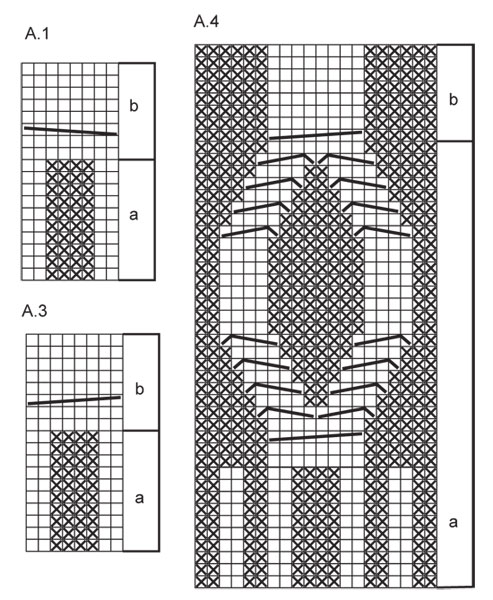 |
|||||||||||||||||||
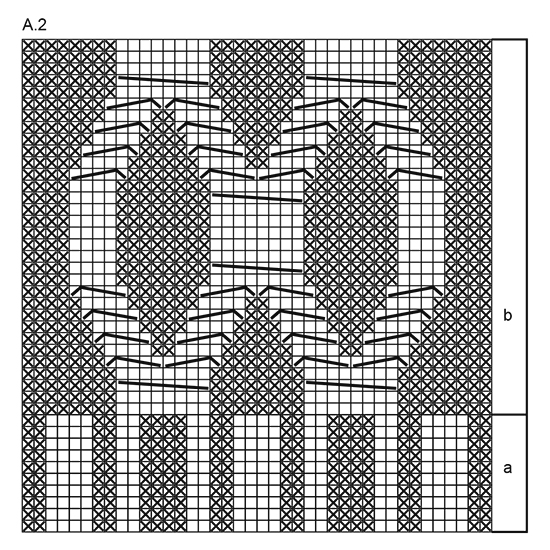 |
|||||||||||||||||||
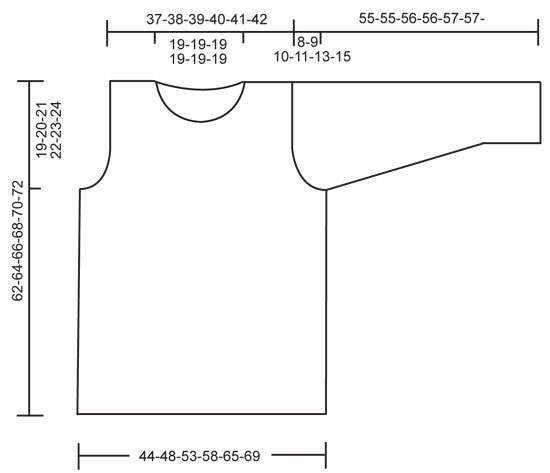 |
|||||||||||||||||||
Have you finished this pattern?Tag your pictures with #dropspattern #winterflamesweater or submit them to the #dropsfan gallery. Do you need help with this pattern?You'll find 22 tutorial videos, a Comments/Questions area and more by visiting the pattern on garnstudio.com. © 1982-2026 DROPS Design A/S. We reserve all rights. This document, including all its sub-sections, has copyrights. Read more about what you can do with our patterns at the bottom of each pattern on our site. |
|||||||||||||||||||







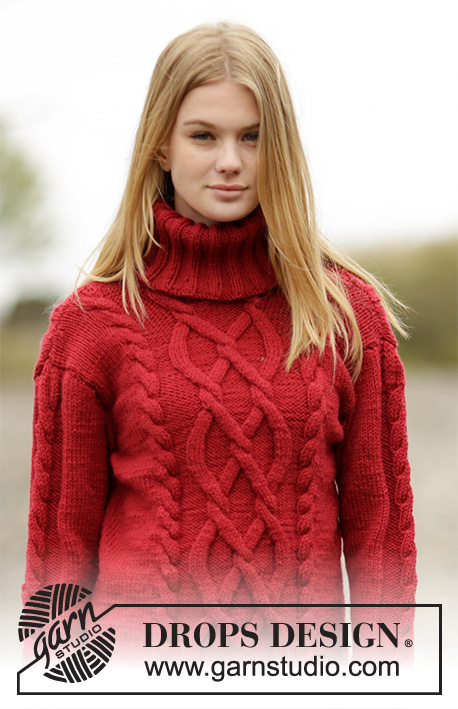
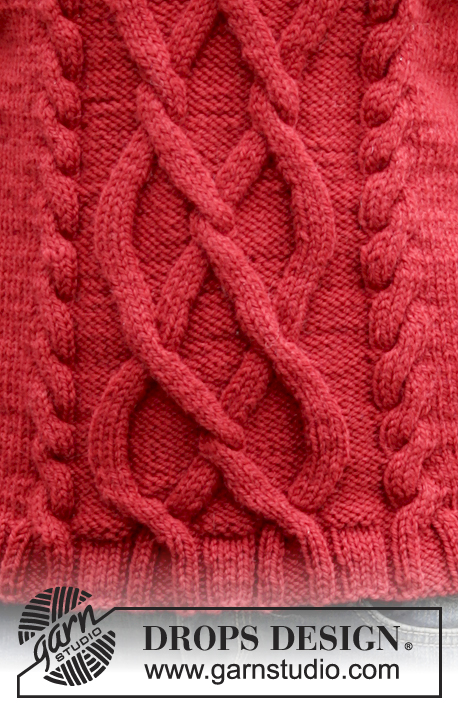

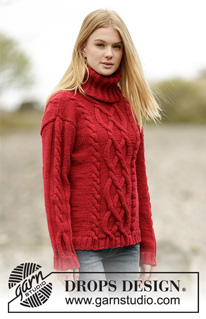
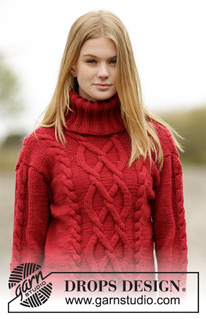





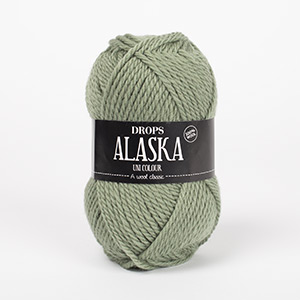

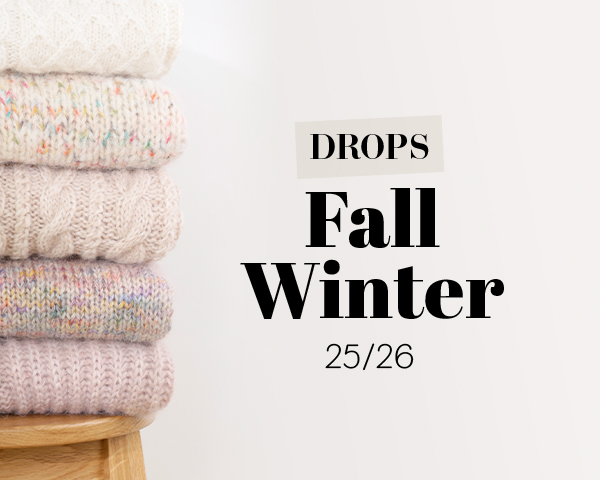



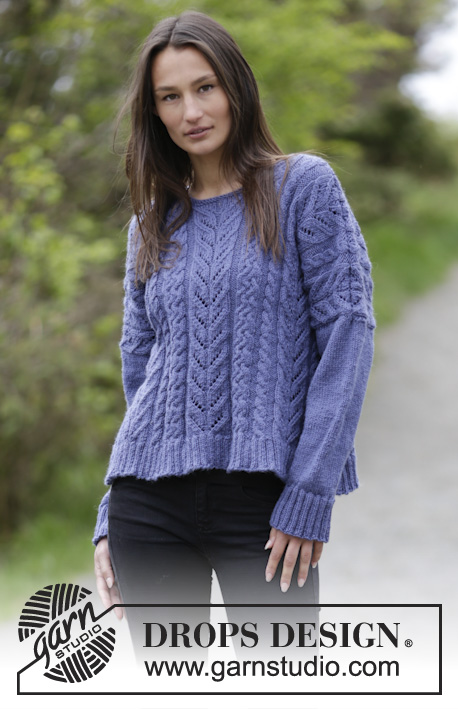










































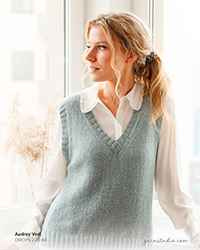

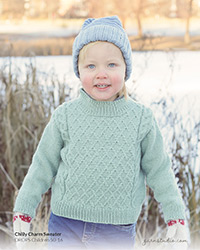
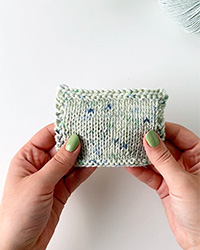

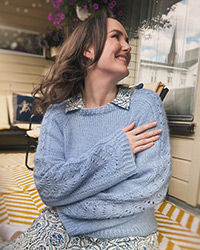
Post a comment to pattern DROPS 164-46
We would love to hear what you have to say about this pattern!
If you want to leave a question, please make sure you select the correct category in the form below, to speed up the answering process. Required fields are marked *.